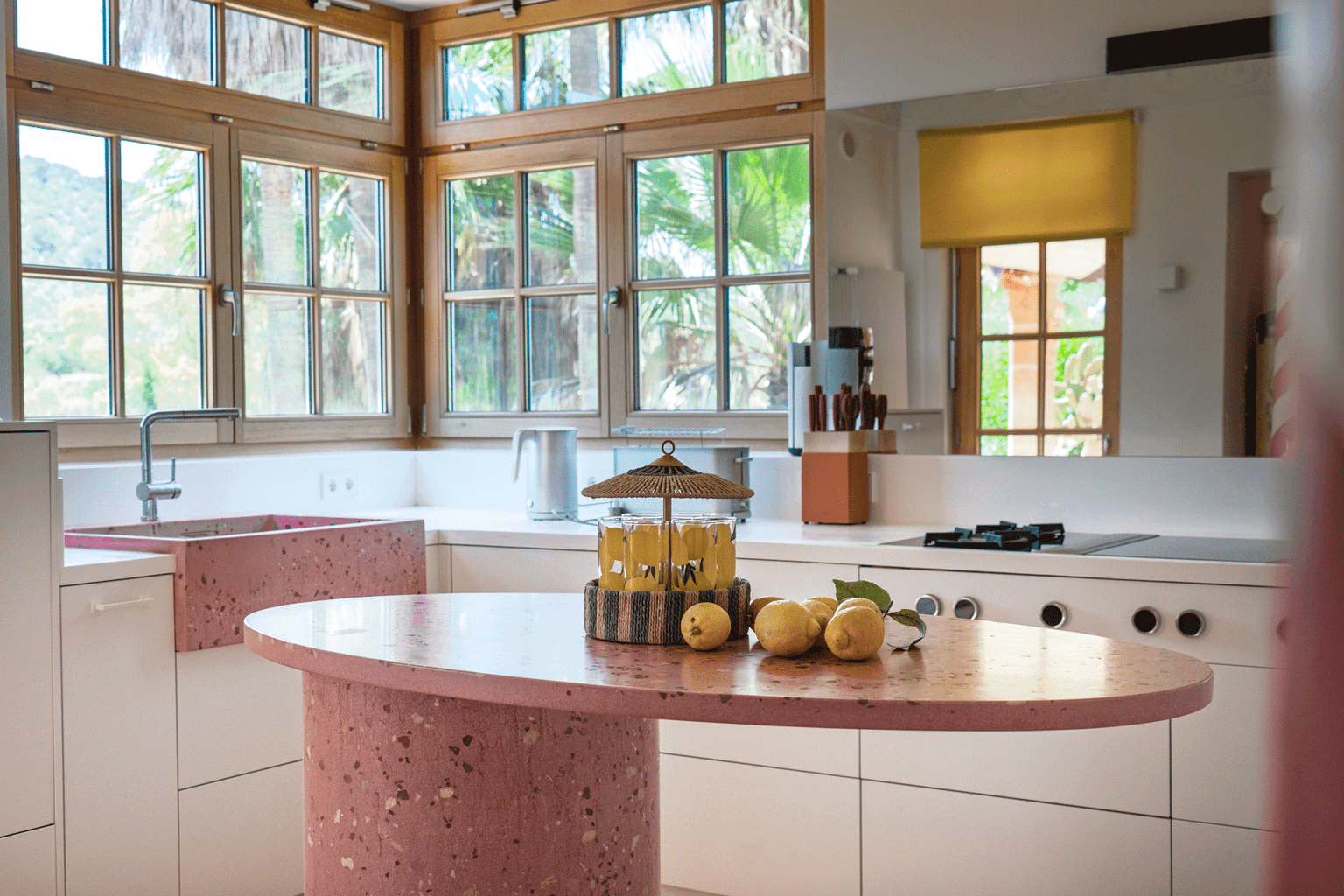Curves

Embracing the Curve
Round & Asymmetric Shapes in Modern Kitchens
A Shift from Geometry to Gesture
Traditionally, kitchen design has leaned heavily on precision, modularity, and symmetry. But in 2025, we’re seeing a strong counter-current: curved islands, uneven shelving, oval dining bars, and pill-shaped worktops are making waves.
This trend is inspired by a wider design philosophy known as “soft minimalism” — a movement that favors tactile materials, natural lines, and a calmer, more intuitive spatial experience.
Why Are Curves Trending in Kitchen Design?
1. Human-Centered Aesthetics
Curves feel inviting. They mirror natural forms — river stones, tree trunks, rolling landscapes — and create a more comfortable and organic atmosphere. In a space that’s used daily and socially, this softness matters.
2. Flow & Movement
Rounded corners and asymmetrical layouts encourage better flow of movement, especially in open-plan homes. You move around the kitchen rather than being boxed in by it.
3. Safety & Practicality
In family homes, no sharp edges means fewer bumps and bruises for children — a subtle but welcome functional bonus.
4. A Statement of Design Confidence
Curves require craftsmanship. Whether in stone, wood, or composite materials, pulling off a clean, curved edge is harder than right angles — and it shows. A curved kitchen island or floating round shelf immediately feels premium, custom, and sculptural.
Materials That Work Best
This organic design language is often paired with natural materials that further soften the space:
Textured woods (oak, walnut, ash) in curved cabinetry
Polished concrete or terrazzo for round tabletops and worktops
Marble with flowing veining that complements the curves
Matte-finish lacquers and clay-based plasters for a tactile touch
Some designers are even using 3D-printed recycled materials to create asymmetrical, flowing kitchen forms with minimal waste.
These kitchens feel more like furniture than utility — part sculpture, part sanctuary.
Design Tips: How to Integrate the Trend
Start small: Consider a curved breakfast bar, semi-circular open shelves, or an arched cabinet niche.
Go bold: A pill-shaped kitchen island can anchor an entire room.
Contrast smartly: Pair soft shapes with structured elements — like clean overhead lighting or vertical wall panels — to create balance.
Think tactile: Combine curves with textured surfaces to deepen the sensory impact.
Final Thoughts
The rise of curves and irregularity in kitchen design is more than a passing trend — it reflects a broader cultural shift toward human-centered design, nature-inspired aesthetics, and emotional comfort.
As our homes become not just places to cook, but places to live, gather, and recharge, the soft kitchen feels like a natural evolution — one that invites us to slow down, breathe in, and experience design as something we feel, not just see.